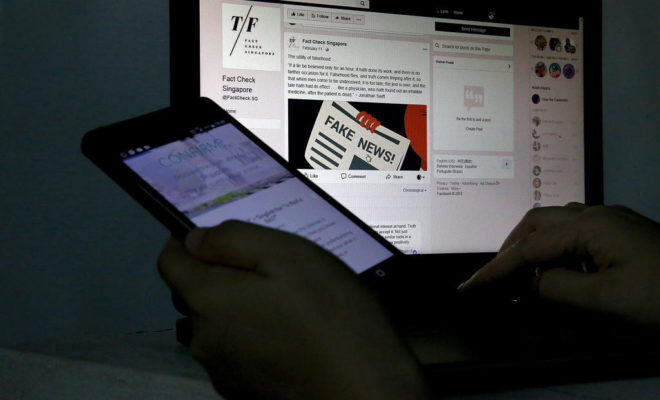Technology has the potential to make voting safer. Applied correctly, it can boost voter participation, increase turnaround time (tallying of votes) and improve the voting experience. In Africa, many have clamoured for a switch to electronic voting methods as a way to potentially curb the influence of big money in politics and, considering that we can now do a multitude of things through our phones, like order for groceries and send people money through banking apps, it is a bit befuddling why we cannot vote for elected officials, electronically, just yet.
Electronic voting has many advantages including simplified voter registration, increased voter turnout, improved accuracy in voting and faster results. However, just like all things, there are many risks to consider before deciding to switch over to electronic voting methods.
Unfortunately, technology brings new opportunities for hackers and scammers to take advantage of people and elections through tech fraud. Over time, tech fraud has influenced voter fraud in many ways including allowing people to register under fake profiles, allowing them to vote more than once and to manipulate the vote as they please.
As the agitation for improved voting methods increases, governments and citizens must be aware of the risks posed by electronic voting and find lasting ways to avoid these problems.
Here are some of the risks associated with electronic voting:
Meddling from foreign nations:
Foreign electoral interventions happen when governments attempt to influence elections in another country through covert or overt measures. This became a prominent issue following the American elections in 2016 when President Trump won and Russia was accused of enabling this result. Unfortunately, the practice is not new. Experts suggest that this has been happening in international relations for quite some time and one study suggests that America intervenes the most in foreign elections, followed by Russia. The difference with electronic voting is that now, as technology helps to make voting easier, it simultaneously helps to make these foreign electoral interventions easier as well.
Cybersecurity flaws in voting machines:
Since the Russian interference in America’s 2016 presidential election focused on misinformation and targeting hacking, US electoral officials have scrambled to improve their voting machine infrastructure. To improve the software used in voting machines, “a recent hacking conference featured a “Voting Village,” where people were encouraged to try to break into voting machines to find flaws.” Hackers at the DEFCON Computer Security Conference believed they could help prevent the manipulation of U.S. elections by testing the security of commonly used election machines in an attempt to “root out weaknesses in voting machines so that vendors will be pressured to patch flaws and states will upgrade to more secure systems.” In the first day, these hackers were able to swap out software, uncover network plug-ins that shouldn’t have been left working, and uncover other ways for unauthorised actors to manipulate the vote.
Still, many experts argue that it is easier to hack a voting machine when you are sat right next to it and given an unlimited amount of time to do so. In the real world, however, it is a lot more difficult.
“Anybody could break into anything if you put it in the middle of a floor and gave them unlimited access and unlimited time,” said Leslie Reynolds, executive director of the National Association of Secretaries of State.
Malware risks:
It is still possible for hackers to infect voting machines with malware (viruses) and, if this happens, it is possible to infiltrate voting machines and wipe away any data on votes carried out on it without leaving a trace of the offending malware.
In 2015, Karl Tomas reported that in Virginia, US, AVS WinVote touchscreen voting machines were vulnerable, and had been using simple passwords like ‘abcde’ and ‘admin’ from 2002 to 2014 – making it relatively easy for hackers to create and execute malicious code. “In this way, hackers don’t have to manipulate the data to change the votes and they could simply erase the device information, something that is not very difficult to achieve for a hacker with average abilities.” On the voter’s side, “a form of vote tampering which is very difficult for any government electoral authority to control is malware installed on voters’ computers designed to interfere with what the browser presents on the screen. For example some candidates could be hidden from view or votes changed. With many people voting and a secure verification system this kind of interference is likely to be detected. However it can be used to spoil the election. The resources and motivation required means this a much smaller risk in non-government elections which are also much easier to re-run in the event of a spoiled election.”
Other risks include voter registration manipulation and running the risk of obsolete machines breaking down. According to Techspective, “statistics say most of the voting equipment used in the United States is more than a decade old and the software on the machines used to tally votes is just as ancient. Besides the cybersecurity risk already mentioned, people should be concerned that the technology that lets them participate in e-voting may fail.’
While it is possible for technology to help and harm at the same time, it is imperative for government looking to move into electronic voting to assess the risks involved and figure out lasting ways to mitigate them. Researchers at the University of Birmingham recently demonstrated a new form of online voting which would allow a voter to vote securely even if their machine was infected with a virus. Technology can ultimately make voting safer, provided the officials involved in it show a willingness to invest in better, newer options.


